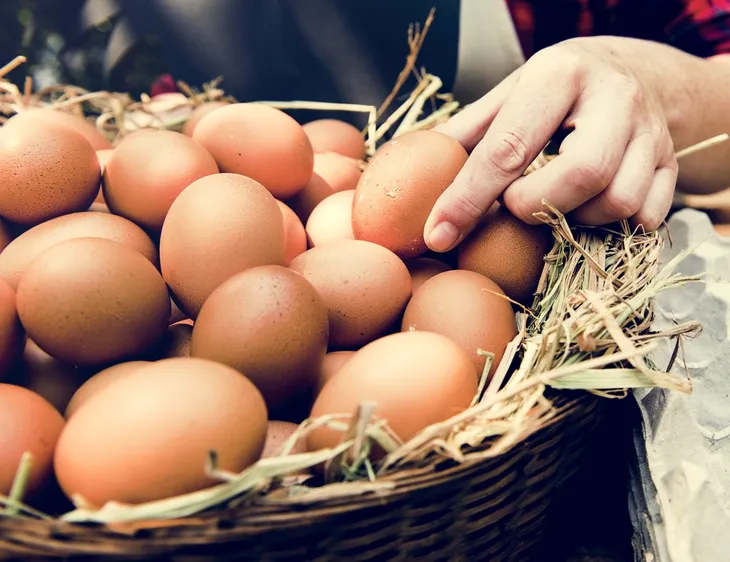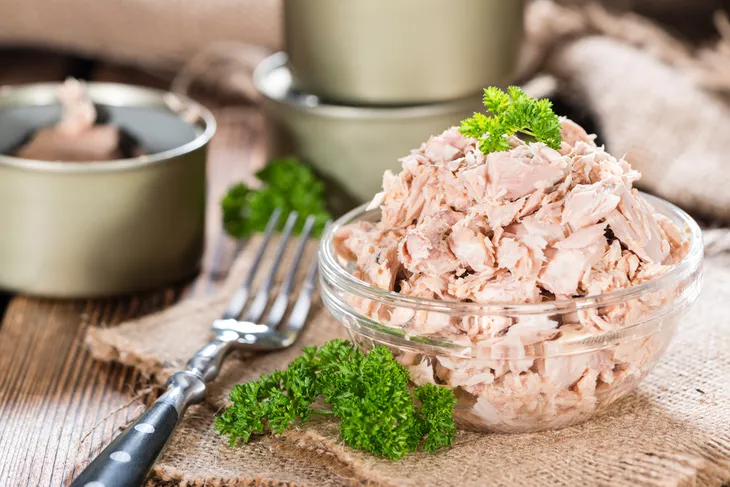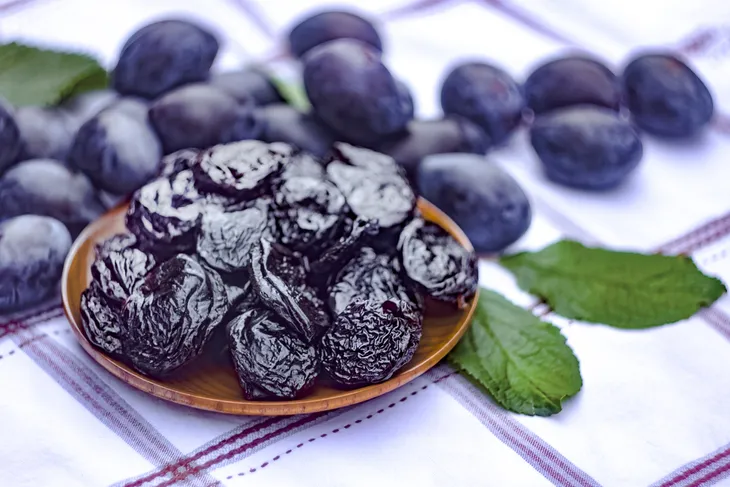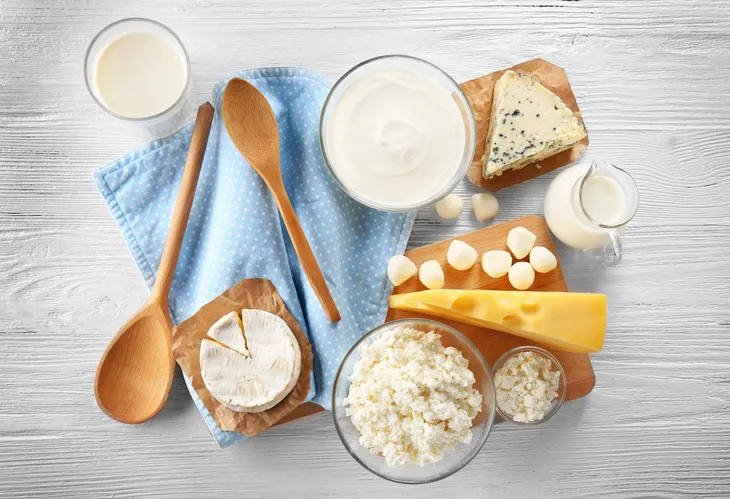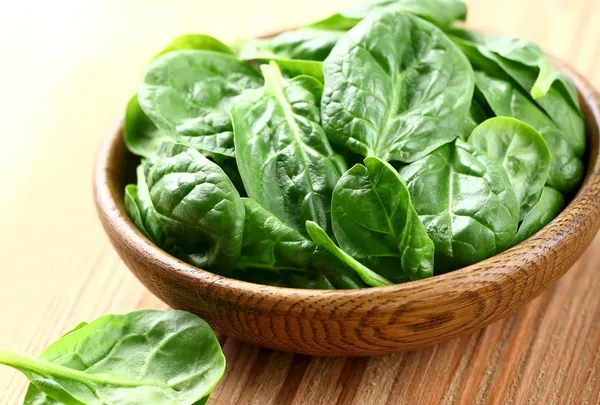Iodine is one of the many essential minerals for our health, but it’s not one we hear about all that often. This is because it’s quite rare for anyone in North America to have an iodine deficiency. Most people don’t have to make a conscious effort to eat iodine because it’s in our table salt, and we Americans all get plenty of salt in our diet!
While most people get plenty of iodine in their diet, Healthline warns that about one-third of the population is actually at risk of an iodine deficiency. This is more common for people who live in European countries where there isn’t a lot of iodine in the soil. An iodine deficiency can be quite dangerous as it can result in the development of thyroid problems like a goiter which is the swelling of the thyroid gland or hypothyroidism “which can cause fatigue, muscle weakness and weight gain.” Always talk to your doctor and dietitian about iodine before taking any supplements or eating an excessive amount as toxicity can be detrimental in adults and children.
To make sure that you’re getting the recommended amount of iodine in your daily diet, here’s a list of some of the best natural sources of iodine!
Eggs
The best thing about eggs is that they are so versatile. You can enjoy them on their own in so many different forms, with toast or in a burrito, as part of a bigger recipe, or even on a sandwich! The options are endless and it’s a good thing because we should all be eating eggs on a regular basis. Eggs are a great source of vitamin A, vitamin D, zinc, calcium, antioxidants, protein, and iodine! To top it all off, one egg has fewer than 100-calories, so one hard boiled egg would be a great light and guilt-free snack.
It’s important to note that much of the nutrients, including the iodine, come from the yolk. “Egg yolks are a good source of iodine because it is added to chicken feed. Yet since the content of iodine in chicken feed can vary, the amount found in eggs can also fluctuate,” writes Healthline. According to Dr. Axe, one large egg averages about 24-micrograms of iodine which is 16-percent of the daily recommended amount. So tomorrow morning when you’re wondering what to have for breakfast, don’t hesitate to whip up some eggs!
Lima Beans
Lima beans have quite a few nicknames. They’re also referred to as phaseolus lunatus, butter bean, sleva bean, or even Madagascar bean! While they might not be that popular, they definitely should be! These beans are often used in the Native American dish succotash which mixes lima beans and corn, but the options for mixing them into other dishes are endless. Since they are part of the overarching legumes family lima beans reap a lot of the same benefits, mainly that they are a good source of fiber, magnesium, and protein, but also low in fat. And unlike some of the other options on this list, lima beans are a great way for vegans and vegetarians to get their iodine.
On top of all that, they’re also packed with iodine. Dr. Axe lists 1-cup of cooked lima beans are containing 16-micrograms of iodine which is about 10-percent of the daily recommended amount. However it is important to note that the content of iodine in these beans isn’t as reliable. “Due to the variation of iodine in soil, irrigation water and fertilizers, the amount of iodine can vary in fruits and vegetables,” says Healthline.
Seaweed
Seaweed might not be a popular snack for many, but it’s got a ton of great health benefits, one of which is that it’s the best natural source of iodine. While it varies depending on which kind of seaweed you’re eating, it still has the highest content out of any of the foods on this list. Dr. Axe states that one sheet of dried seaweed can hold anywhere from 19 to 2,984 micrograms of iodine. That’s a pretty huge scale and on the tail end, a lot of iodine. You wouldn’t want to indulge in too much seaweed because it’d be easy to overdo it with the iodine content. “Excess iodine content consumption is well-tolerated in the majority of people but could result in thyroid dysfunction for those who are susceptible,” writes Healthline.
The three most common types of seaweed to try for iodine are nori, wakame, and kombu kelp. Let’s start with nori…this is a type of red seaweed and out of all three listed here it has the lowest amount of iodine. Nori is the type of seaweed that is often used for sushi rolls. It contains about 16 to 43-micrograms of iodine per gram. Wakame is a brown seaweed that Healthline describes as “slightly sweet in flavor.” You’ve probably had it before in miso soup. The amount of iodine in wakame depends on where it came from. Wakame from Asia tends to have more iodine than Australia or New Zealand, but on average it’s about 66-micrograms per gram. We saved the best for last! Kombu kelp has the highest amount of iodine out of all three seaweeds and is another brown seaweed that is commonly sold as a powder or in dried sheets and used in Japanese soup stock called dashi. Kombu kelp can contain up to 2,984-micrograms of iodine per sheet which is 1-gram.
Tuna
Tuna sandwich anyone? Tuna is another popular form of seafood that doesn’t have a strong fishy taste and is quite affordable which is why it’s many people choice for seafood. In addition to its taste and affordability, tuna offers the chance to reap some good health benefits. It’s low in calories, packed with protein, is a good source of omega-3 fatty acids, potassium, iron, vitamin B, and of course, iodine.
Dr. Axe points out just how much iodine is in tuna. The source states that 1 can (in oil) of tuna which adds up to about 3-ounces, has 17-micrograms of iodine in it. This is a small but respectable 11-percent of the daily recommended amount. Surprisingly, just like cod, the less fat, the higher the iodine content. “Fish higher in fat offer lower amounts of iodine. Since tuna is a fattier fish, the amount of iodine found in tuna is lower than leaner fish varieties, such as cod,” says Healthline.
Prunes
Prunes might not be everyone’s favorite snack, but no one can deny how good they are for our body. While they’re garnered quite the reputation around keeping us “regular” we often overlook all the other benefits to prunes. In addition to being helpful in the fight against constipation, are high in fiber, sorbitol, and according to Healthline, a type of sugar alcohol. They’re also a great source of iodine for vegans. Five prunes adds up to 13-micrograms of iodine which is 9-percent of the daily value.
“Prunes are high in many vitamins and nutrients, including vitamin K, vitamin A, potassium and iron. Because of the nutrients prunes offer, they may help improve heart health, decrease the risk of colon cancer and even help manage weight by decreasing appetite,” explains Healthline. What’s not to like about that?!
Cod
Right behind seaweed, cod is one of the best food sources of iodine. Dr. Axe notes that just 3-ounces of cod contains 99-micrograms of iodine which provides us with about 66-percent of the daily recommended serving of iodine. You could get all the iodine needed for the day with just one meal! The Icelandic Food Content Database also points out that the lower in fat a piece of fish is, the more iodine it has. Of course, like a lot of the other food on this list, the amount of iodine varies with each piece of fish. It all depends on whether or not the fish was farm-raised, wild caught, and the area or region in which it came from.
Healthline raves about this white fish writing that not only is it versatile without the fishy taste that many people who aren’t big seafood fans hate, it’s also “relatively low in fat and calories but offers a wide variety of minerals and nutrients, including iodine.” Now I’m ready for some fish and chips!
Dairy
Dairy is a huge part of the average person’s diet. If you stop an think about it, there’s dairy in a lot of the things we eat on a daily basis. This is a good thing because dairy is one of the major sources of iodine. “The amount of iodine in milk and dairy differs greatly based on the iodine content in the cattle feed and the use of iodine-containing disinfectants during milking,” writes Healthline. The source cites a study conducted by the Boston University School of Medicine which examined 18 different brands of milk being sold in the Boston area to see how much iodine content they contained. “It found that all 18 brands had a least 88-micrograms in 1-cup of milk. Some brands even contained up to 168-micrograms in 1-cup.”
The best dairy sources for iodine are milk, buttermilk, paneer, curd, and cheese, particularly mozzarella cheese. For example, 1-cup of milk contains 59 to 112-percent of the daily amount of iodine needed and 1-cup of yogurt contains about half the daily recommended amount. Healthline points out that cheese is a little trickier to measure, but 1-cup of cottage cheese has about 65-micrograms of iodine and 1-ounce of cheddar cheese is about 12-micrograms.
Iodized Salt
There is salt in a lot of the food we eat, particularly food that comes prepackaged or at a restaurant. While a huge amount of salt isn’t good for anyone, we all need a small amount of iodized salt in our diet. It’s especially good for our thyroid. Luckily, iodine is added to table salt and most people in developed countries get plenty of salt, so an iodine deficiency is extremely rare. However there are some salts that aren’t iodized, so you should always check.
Shrimp
In addition to being a go-to appetizer and definite crowd pleaser, shrimp is rich in protein and low in calories…that is until we dip it in sauce! This popular seafood is also a good source of vitamin B12, selenium and phosphorus. According to Healthline, it’s also got lots of iodine. “Shrimp and other seafood are good sources of iodine because they absorb some of the iodine that is naturally present in seawater.” Their iodine content is approximately 35-micrograms per 3-ounces which is a whopping 23-percent of the daily recommended amount.
Spices and Herbs
Spices and herbs are a necessity in any kitchen. Not only are the beneficial to our cooking by adding flavor to our food, but according to StyleCraze, they’re also beneficial to our health! The source explains that certain spices like cinnamon (as if we needed another reason to like this sweet treat) and black and white pepper provide iodine to our body. So feel free to sprinkle a little bit of those spices on any future dishes! Similar to spices, some herbs like fennel and hyssop also contain iodine.
Vegetables
In case you missed the memo, vegetables are a pretty important part of our daily diet. If you’re not already eating them, you should probably start! Pretty much all veggies are packed with all the nutrients we need and more. When it comes to iodine, the best vegetables to eat are spinach, soybean, artichoke, turnips, potatoes, legumes, peas, beans, corn, broccoli, and cauliflower, says StyleCraze. All these vegetables derive iodine from the soil they grow in.
Because their iodine comes from the soil, it’s not always the same amount. “The quantity of iodine in these vegetables depends on the iodine content of the soil in that particular area. Cooking these vegetables doesn’t reduce the amount of iodine in them,” writes the source.
Fruits
Just like vegetables, the reasons for eating more fruit are endless. Unlike vegetables, I enjoy eating (most) fruit because it’s sweet and delicious. But in case you’re one of those people who has a hard time convincing yourself to grab an apple or banana on the way out the door, or sit down with a bowl of strawberries for dessert, here are some facts that might help provide some encouragement. StyleCraze points out that many fruits are packed with antioxidants, vitamins, minerals, and iodine. All of these are essential for overall health.
So what fruits are best for iodine content? Try eating more of any of the following: strawberry, cranberry, fig, pineapple, apple, coconut, grapefruit, kiwi, rhubarb, mango, dates, or apricots.

